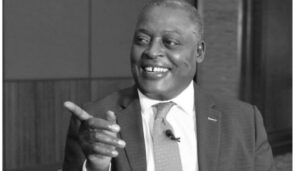Revealed! How officials siphoned millions from EduAfya Scheme – EACC

Ethics and Anti-Corruption Commission (EACC) report reveals how government officials siphoned money from the EduAfya Scheme
Ethics and Anti-Corruption Commission (EACC) report reveals how government officials siphoned money from the EduAfya Scheme.
EACC has released the findings following an examination of systems, policies, procedures, and practices of work at the National Hospital Insurance Fund (NHIF).
In May 2018, the Ministry of Education, in collaboration with NHIF, launched Edu Afya, a comprehensive medical insurance program for students enrolled in all public secondary schools.
All students enrolled in Kenyan public secondary schools were covered by the program.
The government paid a premium of Sh1,350 for each student through the cover.
In the report, EACC said there were instances of induced demand where some Health Care Professions (HCPs) organized transport to pick up the students from their schools.
“Further, some HCPs held outreach activities in schools to induce demand,” the report stated.
It added that some private HCPs did not issue students with records such as invoices for services provided.
“This creates avenues for falsified claims,” the document noted.
NHIF received Sh9.5 billion from the government in four years under the EduAfya between 2019 and 2022.
The programme included outpatient and inpatient services, day surgical services, local road ambulance, and emergency air rescue services.
The report further noted that the list of beneficiaries submitted to the Ministry of Education showed data for both capitated and fixed fees for services (FFS) beneficiaries.
It said the list misrepresented the scheme returns and indicates inaccurate or compromised data.
Several arrested for trespassing into President Ruto land
Karua skips Azimio Summit meeting chaired by Raila Odinga
Ruto administration limits cheapest houses in affordable housing to Kenyans earning below Ksh 20K
Ruto announces breakthrough in securing Raila’s win for AU job
List of top ten performing institutions in Kenya; PSC report
“For example; an Edu-Afya report of 701 beneficiaries generated for HCP code 7779124 had 184 FFS beneficiaries with a claim of Sh175,300,” the report cited.
It further cited an Edu-Afya report generated for HCP code 77798602 which had 12 beneficiaries aged between 26 and 57 years.
The report further revealed that some students lacked Unified Personal Identification (UPI) numbers.
“This made it difficult to access benefits, prompting their parents to incur out-of-pocket expenses.”
Instances of double registration for some EduAfya members were also cited in the report.
The document further revealed that concurrent outpatient and rebate claims were processed and paid for some EduAfya beneficiaries also covered as dependents under the National Health Insurance Scheme.
EACC added that there were cases where a student would visit a facility more than 10 times in a month.
“These weaknesses indicate weak controls in the registration of beneficiaries and administration of Edu Afya Scheme leading to loss and misappropriation of funds,” the commission said.
EACC recommended sanctioning errant HCPs and a clean-up of Edu-Afya data to enhance data integrity and accuracy in reporting.
It also recommended that the Ministry of Education moves to ensure that all students are issued with Unified Personal Identification numbers.
Also read,
Government charging Kenyans seeking to view affordable houses KSh 200 for account activation
Goons lock Ruto CS inside a disputed land
KRA issues directive to Kenyans on filing tax objections
School heads who let students block Ruto motorcade face criminal charges
Man beaten to near death by a woman over Manchester United derby loss
Kenyan Airline responds after two planes Collide mid-air
Follow us




